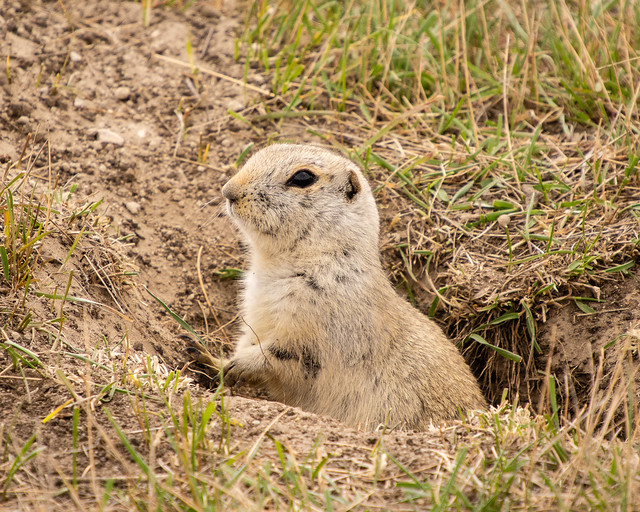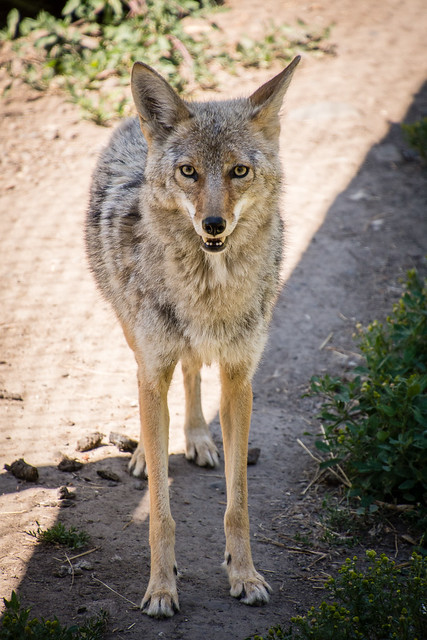Sunday, 27 October 2019
Wildlife-Friendly Urban Planning
Saskatoon Joins the Urban Wildlife Information Network
For the first time ever, over half the world’s population lives in urban areas, and that number is expected to grow to 68% by 2050. Most of this growth is expected to occur in small and medium-sized cities, such as Regina and Saskatoon. Sprawl magnifies the challenges of a rapidly growing urban population as our cities are growing twice as fast spatially as population-wise. “It’s not going to slow down,” Katie Harris says. “We need to start putting into place initiatives that will combat habitat fragmentation and barriers to wildlife movement.”
Urban centres such as Saskatoon are a mix of buildings, parking lots, and streets, but there is also river valley, swale, slough, and wetlands. “There are patches of wildlife habitat within the non-habitat,” Katie explains. “Animals use those areas.” One recent study found that green areas outside the downtown core contained as many ground-dwelling mammals as did rural areas. The researchers noted that “this phenomenon of relatively unchanged fauna outside the downtown area shows that small cities have the potential to maintain a high level of diversity of small ground-dwelling mammals if appropriate planning of further building expansion is implemented. More studies of small cities are needed to better assess their impact on biodiversity. This knowledge can then be applied in better planning for urban wildlife.”
No one knows what or how many wild animals live within the confines of Saskatoon. Katie Harris, in conjunction with the international Urban Wildlife Information Network (UWIN), plans to find out.
Katie is working on her Master’s degree at the University of Saskatchewan. She describes herself as a “northern Manitoba girl” who grew up watching wildlife and going for walks in the bush. This was supplemented by 10 years of camping and environmental initiatives through Girl Guides of Canada. Katie has a dual diploma in conservation/restoration ecology and wildlife/fisheries conservation from Lakeland College as well as a Bachelor’s degree majoring in environmental science. She has just started working on her Master’s degree in animal science with funding from an NSERC scholarship. “The scholarship has given me greater flexibility in choosing my research topic,” Katie says. “They’re highly competitive awards and I’m proud to have received one.”
Katie will be studying urban mammals living in Saskatoon’s fragmented urban landscape. A key element of her research will be to establish Saskatoon’s first-ever database documenting the wildlife living within the city. Her findings will contribute to the Urban Wildlife Information Network’s database, providing an opportunity to compare what is happening in Saskatoon with what is happening around the world.
Saskatoon is the second Canadian city (after Edmonton) to join the Urban Wildlife Information Network. The Network’s partners contribute to the largest international study on urban wildlife in existence gaining valuable opportunities to share information based on comparative data. Dr. Maureen Murray of the Urban Wildlife Institute, Lincoln Park Zoo, Chicago, was the keynote speaker at the 2019 NatureCity Festival, providing an overview of the importance of the work being undertaken by UWIN's partners.
A small committee of community partners (University of Saskatchewan, City of Saskatoon, Meewasin Valley Authority, Saskatoon Forestry Farm Park and Zoo, Saskatoon Nature Society) is assisting Katie with her work. The Forestry Farm Park and Zoo generously contributed 25 trail cameras that will be used to track the wildlife that move about the city. Cameras already set up in the Northeast Swale will be used to provide supplementary data.
The cameras will be set up along a transect with north/south and east/west lines leading away from the central point at Meewasin’s downtown office building. The cameras will be set up within one kilometre on either side of the transect and about a kilometre apart. Their placement will carefully follow UWIN’s guidelines in order to provide relevant comparisons with other cities based on the degree of habitat fragmentation and population density.
Katie’s focus will be on the mammals that show up on the cameras, but the material will be archived and available for other researchers who may want to study birds, reptiles, or other wild creatures. Privacy will be maintained by blurring human faces and making an effort not to install cameras on private property. There will be opportunities for the public to get involved in checking to make sure the cameras are still in place and in helping to identify wildlife on Zooniverse. Katie will also be sharing some of the photographs on social media.
Katie hopes the database will be a long-term, 30-50 year project providing a rich database for future biodiversity-friendly urban planning. “We need to adapt to the needs of urban wildlife,” Katie says. “It’s possible we won’t have these animals in future if we don’t become more flexible.”
If you would like to be involved in tracking urban wildlife, contact your local nature society or Nature Saskatchewan.


